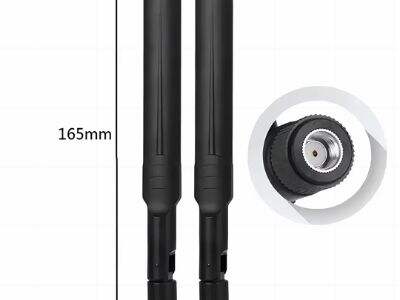What Defines GNSS Performance in Vehicle GPS Antennas
When we refer to GPS antennas in cars, we can imagine we want to receive the best signals from the Global Navigation Satellite System, or GNSS. This is what helps our cars understand where they are and how to get to where they need to go. But what actually goes into making a GPS antenna work so well? Let's find out together!
The two primary factors that contribute to the strength and stability of signals that enable vehicle GPS antennas to function well are: the satellite signal strength and stability from the GNSS. The antenna has to capture the signals spread out from the satellites and traveling through space so that our cars can easily comprehend their location on Earth. When the signals aren’t very strong or they come at us erratic, your GPS could get confused and send us in the wrong direction!
GPS systems need to be able to pass over flitting signals and noise so it can accurately locate itself. Occasionally, satellite signals will dance off buildings or trees before finding the antenna on our car. This can disrupt our GPS because it might think we are somewhere that we aren’t. Smart enough to ignore all those bouncing signals, and focus only on the direct ones.
Advantages
How the GPS antenna is built, and where it is located on the car, can really affect how well it works. Consider what would be happening if the GPS antenna were placed right next to some massive chunk of metal on our car: The engine. This might screw up the signals from the satellites, and make our GPS less accurate. That’s why it’s a good idea to position the antenna somewhere the signal isn’t obstructed and can receive the best signals.
The GPS antenna must also be sensitive to low-level signals and capable of making connections with several satellites simultaneously, in order to work properly. Sometimes satellite signals can be extremely faint, if for instance we are driving through dense woods, or near tall buildings. But the GPS antenna must be able to receive these weak signals for our GPS to function as it is supposed to. It also helps if the antenna is able to link to more than one satellite at the same time, since that can also make our location more precise.
Benefits
And GPS Antenna that work with inertial navigation systems can provide us with better, more reliable information about where we are — and can do so when satellite signals are weak or blocked. Inertial navigation systems rely on sensors to monitor how the car is moving, a feature that can help when satellite signals are not particularly strong. When the GNSS antenna is combined with an inertial navigation system, our GPS will still give us superior directions even in challenging situations.
Summary
Finally, to make sure GPS antennas in cars work best, they need to get good, solid signals from the satellites. So our GPS antennas can help us cut through the noise, bounce be damned! pun not intended.By disregarding reflected signals, clever designs and placements, hypersensitivity to weak signals, as well as adding inertial navigation to the mix, our GPS antennas ultimately can help us reach the necessary destination without getting lost. A great GPS antenna is like that friend that guides us during the best of times, you can rest assured that you will never be lost doing what you like most. Deck out our car roof-tops with those bulky GPS antennas!

 EN
EN
 ES
ES
 PT
PT
 NL
NL
 AR
AR
 HR
HR
 CS
CS
 DA
DA
 FI
FI
 FR
FR
 DE
DE
 EL
EL
 IT
IT
 JA
JA
 KO
KO
 NO
NO
 PL
PL
 RO
RO
 RU
RU
 SV
SV
 TL
TL
 IW
IW
 ID
ID
 LT
LT
 SR
SR
 SK
SK
 SL
SL
 UK
UK
 VI
VI
 ET
ET
 HU
HU
 MT
MT
 TH
TH
 TR
TR
 FA
FA
 GA
GA
 BE
BE
 IS
IS
 LB
LB
 BG
BG

/images/share.png)

